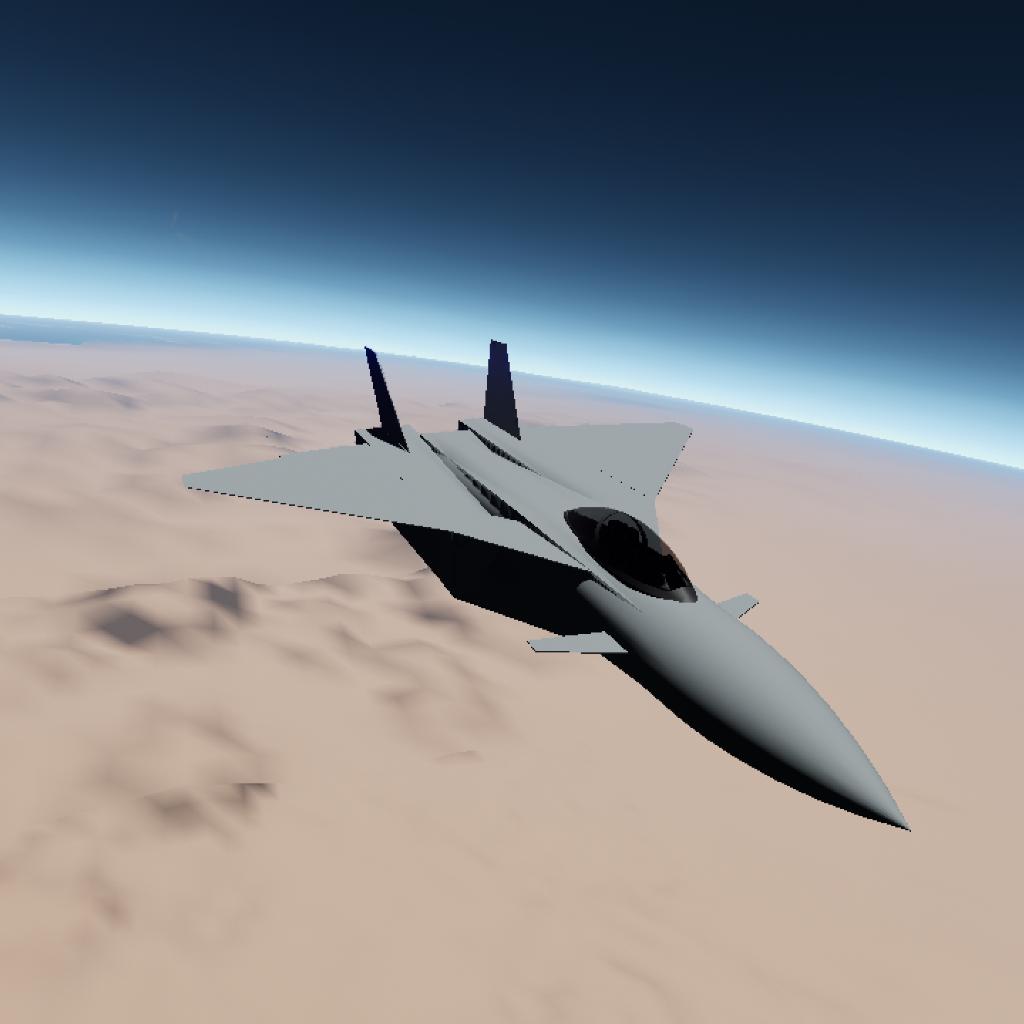First of all if you're wondering, I put an Afterburner Limiter because based on my testing, full throttle that made the aircraft achieve speeds up to Mach 3 caused intolerable instability with the aircraft and in attempting to point the heading from east to west, 9/10 the aircraft would stall immediately. As a result of this, I regret to inform you that Mach 3 cruising is now being suggested as a bad thing for the aircraft but I included a toggle to disable the limiter if you want to use the full throttle but you have been warned about the instability it brings.
While we lose one of the great features of the SuperSound series, I heavily improved on the stability and manouverability of this aircraft and made easier with the lower speed we are now cruising at. The Afterburner Limiter limits the throttle to 85% which is just enough to give us that good glow of the fuel mixture and at this throttle we can cruise at around Mach 2.2 which is still fairly quick and more in line with what real life fighter jets can usually reach. The speed at which the control surfaces deflect have been increased and also increased the angle at which the control surfaces can deflect. Modified the shape of the inlet and added an extra pair of stabilizers just front-bottom of the inlet. Lastly, I think the previous paint I stole from the Wasp 2.0 was getting boring so I found a new one that looks similar but quite different. That's pretty much all of the things I added in this modification of the MK-II and I hope it's enough for it to be better than the previous variations.
Operating procedure for takeoff and flight:
Takeoff:
Do the following consecutively.
Start the engines in the AG panel.
Activate Stage 1.
Open the Nav Sphere Panel and lock current heading.
Open the navsphere and set the pitch to 9°.
Open the slider tab and choose Slider 1 and set it to +100. This is for the flaps.
When ready, set throttle to the limited 85% and wait until airborne.
Once airborne, retract the landing gear, set Flaps (Slider 1) to 0 and wait until clear of terrain.
Once clear, select your heading and adjust the pitch accordingly.
Flight:
• At flight, the jet is controlled primarily via the Nav Sphere. You can use other controls like the Flaps (Slider 1).
• When using the flaps, it is advised that you use it mostly to keep the nose up and please avoid using the flaps to point the nose down if the Nav Sphere selected pitch is higher than it. I advise using the pitch to lower the nose down instead.
• When cruising, I suggest that you select a pitch from 2° (very slow ascent and low climb ceiling but you retain speed or even gain it quickly or easily) to 9° (rapid ascent and high climb ceiling but you quickly lose speed). Of course, you're not cruising at every time of your flight so please adjust the pitch according to the situation.
• I advise only turning off the Afterburner Limiter at scenarios where full throttle is needed.
• This aircraft has a high service ceiling (I'm not sure how much) but I advise to descent to 10,000m and below if you want to aggressively change your heading or pitch because it's barely controllable at altitudes with low air density.
I finally leave you with a question, is this better than the previous one I did because I think it was a terrible start for the MK-II but that's all I'm gonna say and thank you for reading to the end...if you didn't skip the entire page I wrote. Lol
GENERAL INFO
- Successors 6 craft(s) +14 bonus
- Created On: Android
- Game Version: 0.9.917.1
- Price: $26,926k
- Number of Parts: 33
- Dimensions: 6 m x 13 m x 17 m
PERFORMANCE
- Total Delta V: 0m/s
- Total Thrust: 300N
- Engines: 3
- Wet Mass: 21,620kg
- Dry Mass: 11,044kg
STAGES
| Stage | Engines | Delta V | Thrust | Burn | Mass |
|---|---|---|---|---|---|
| 1 | 2 | 0m/s | 0N | 0s | 21,620kg |









